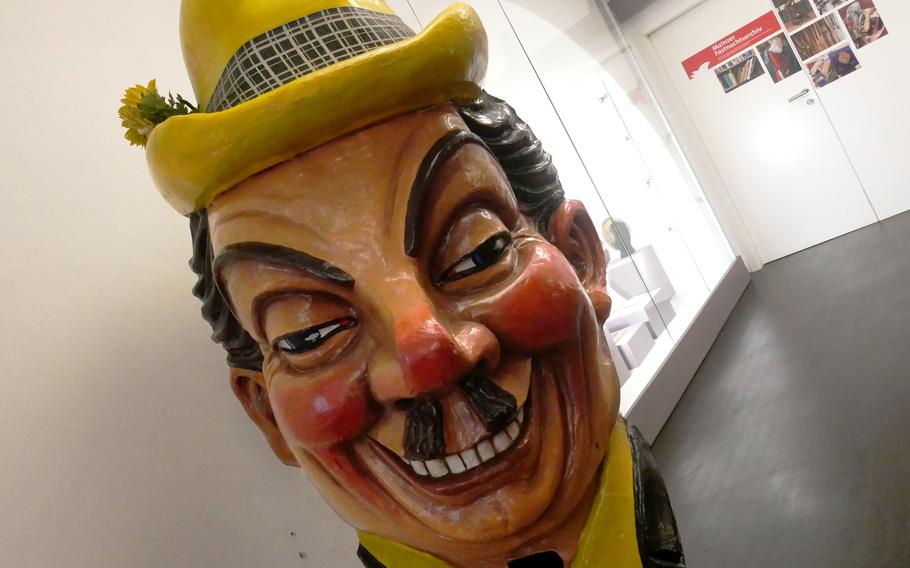
Swell heads have been a main feature of the Mainz Rose Monday carnival parade since 1927. They are made of papier-mache and worn on the shoulders with a hole to see and breathe through. There are about 30 swell heads, and all of them have names. This is Schorsch. (Michael Abrams/Stars and Stripes)
Carnival, that crazy time before Lent, is celebrated in many parts of the globe. From Brazil to the Caribbean, from Nice to Venice and to German cities along the Rhine River, people party, dance and parade.
In Germany, it is known as the fifth season, and in Mainz, a carnival stronghold on the Rhine, a museum traces the city’s carnival culture.
While some sort of carnival celebrations have been around for centuries, today’s version in Mainz, where it’s called Fastnacht, dates to the late 1830s, when a carnival association was founded.
It organized sitzungen, which are meetings with farce, fools’ caps and medals, as well as the first Rose Monday parade. The Fastnacht speeches and the uniforms worn during the silly season were meant to mock the authorities in general and often the military in particular.
Over the decades, the Fastnacht celebrations grew, with more carnival clubs participating and the Rose Monday parade drawing hundreds of thousands of spectators.
The Fastnachtsmuseum is housed in the basement of the Proviant-Magazin, a brick mid-19th-century military supply depot downtown.
Here you can see the uniforms worn over the decades and the different fools’ caps worn by the clubs. In the first room, a selection of caps hang from the ceiling that you can try on for a selfie.
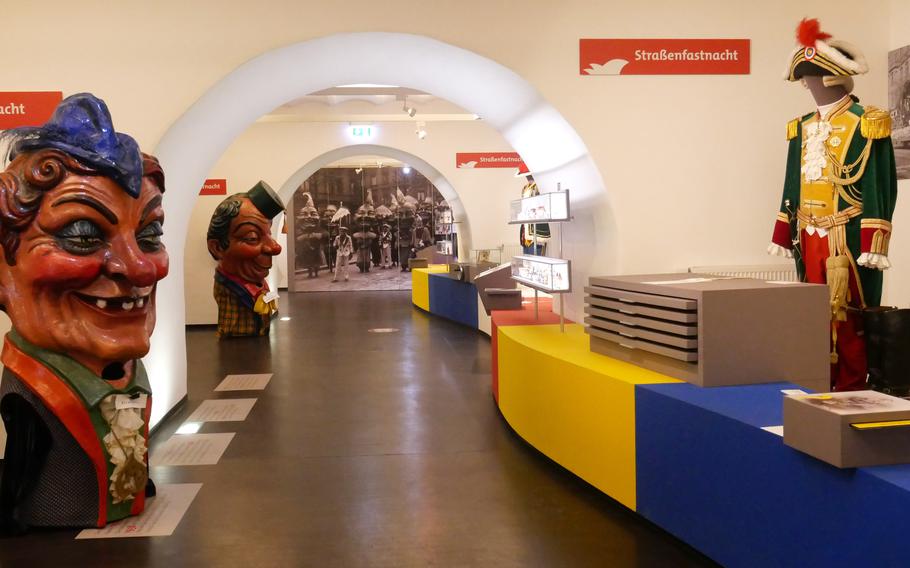
Inside the Fastnachtsmuseum in Mainz, Germany. The museum traces the history of carnival in Mainz from its 19th-century beginnings to the present and is run by volunteers. The swell heads, known as Schwellkoepp in German, are mainstays of the city’s Rose Monday parade. (Michael Abrams/Stars and Stripes)
On display are a trio of Schwellkoepp, or swell heads. Made of papier-mache and worn on the shoulders with a hole to see and breathe through, they have been a main feature of the Mainz Rose Monday carnival parade since 1927.
Thirty swell heads participate in Mainz Fastnacht, and all have names.
The organizers of the Mainz carnival parade have been selling plaques to help pay for the parade since 1950. Many are on display at the museum. At first, they were flat pins, but since 1971 they are plastic figurines that are hung around the neck.
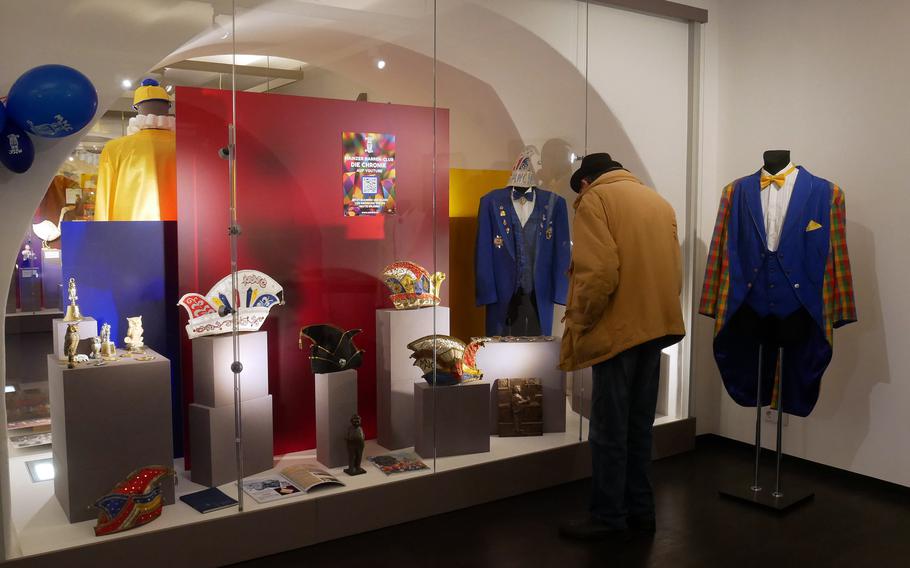
A visitor checks out a display of carnival hats and clothes at the Mainz Fastnachtsmuseum. It traces the history of carnival in Mainz from its 19th-century beginnings to the present. (Michael Abrams/Stars and Stripes)
A selection of Fastnacht medals can also be seen. Originally meant more to mock the military, they have become quite ornate over the years.
The carnival meeting, “Mainz wie es lacht und singt” (Mainz how it laughs and sings), televised since the mid-1950s, is one of German television’s most popular shows. The museum shows snippets of it through the years.
One element of the Mainz carnival that can’t be displayed at the Fastnachtsmuseum, of course, are the large parade floats. But there is a flip notebook on display that presents a planning sketch and the final product.
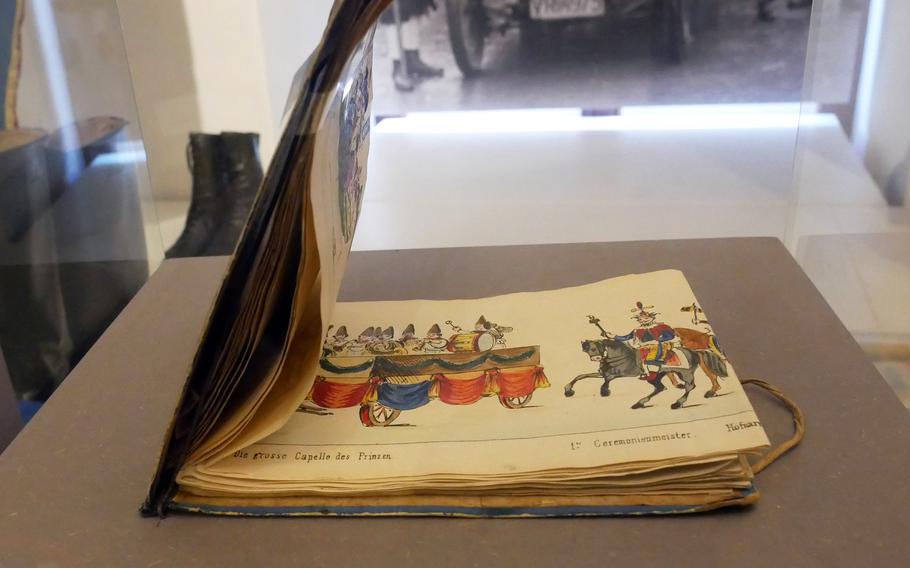
This concertino fold booklet on display at the Fastnachtsmuseum depicts the Mainz carnival parade of 1857. When unfolded, the lithograph is almost 21 feet long. (Michael Abrams/Stars and Stripes)
A fascinating object on display is a concertino fold booklet depicting the Mainz carnival parade of 1857. When unfolded, the lithograph is almost 21 feet long.
Next to it is a facsimile version of it. With the help of a wheel, visitors can scroll through the whole parade.
The museum is rather low-tech, and knowing some German helps. There is an English laminated info sheet that the museum employees, all of whom are volunteers, hand out as a guide through the exhibits.
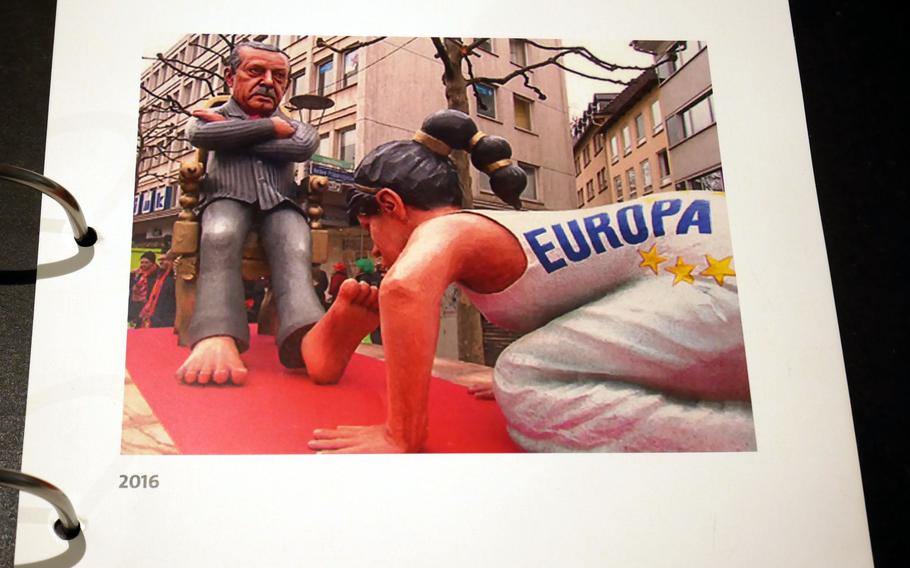
One element of the Mainz carnival that can’t be displayed at the Fastnachtsmuseum is parade floats. A book on display shows sketches of floats and the final product. Here, a picture of a 2016 float shows Europe kissing Turkish President Recep Tayyip Erdogan’s foot for his help in stemming the Syrian refugee tide to the Continent. (Michael Abrams/Stars and Stripes)
Those who want to go beyond the museum experience can check out the real thing starting Jan. 1, 2024, with the New Year’s Day parade at 11:11 a.m.
The fun continues in February with Weiberfastnacht, or women’s Fastnacht, at 11:11 a.m., on Feb. 8, the children’s parade at 2:11 p.m. on Feb. 10 and the parade of the Foolish Guards on Feb. 11.
It all culminates with the big Rose Monday Parade at 11:11 on Feb. 12. On Ash Wednesday, all the carnival fun is over.
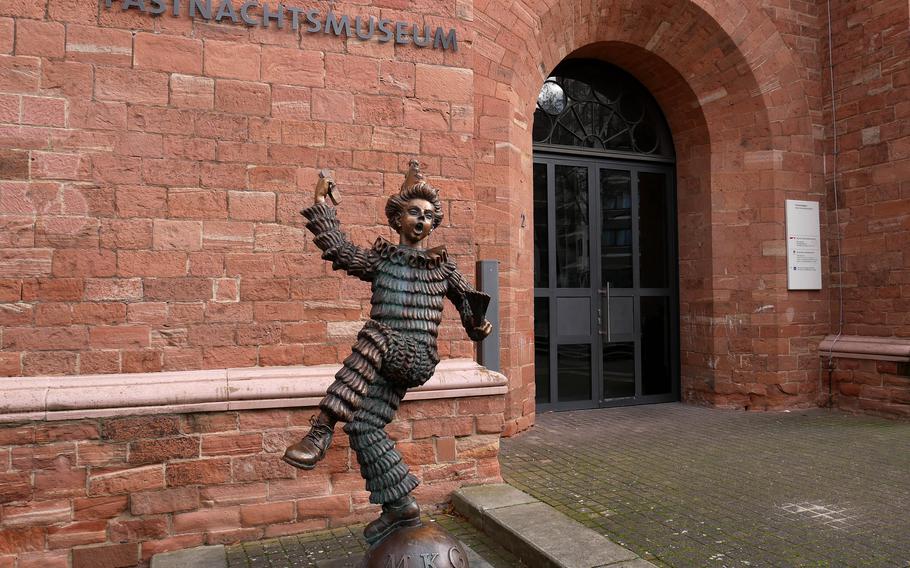
The Mainz Fastnachtsmuseum is housed in the basement of the Proviant-Magazin, a mid-19th-century military supply depot. The museum traces the history of Mainz's carnival, called Fastnacht. (Michael Abrams/Stars and Stripes)
abrams.mike@stripes.com @stripes_photog
On the QT
Address: Universitaetsstrasse 2, Mainz, Germany.
Times: 11 a.m.-5 p.m., Tuesday to Sunday. Closed Monday.
Costs: Admission is 3 euros for adults, 1.50 euros for children up to 14, cash only.
Information: www.mainzer-fastnachtsmuseum.de (German only)